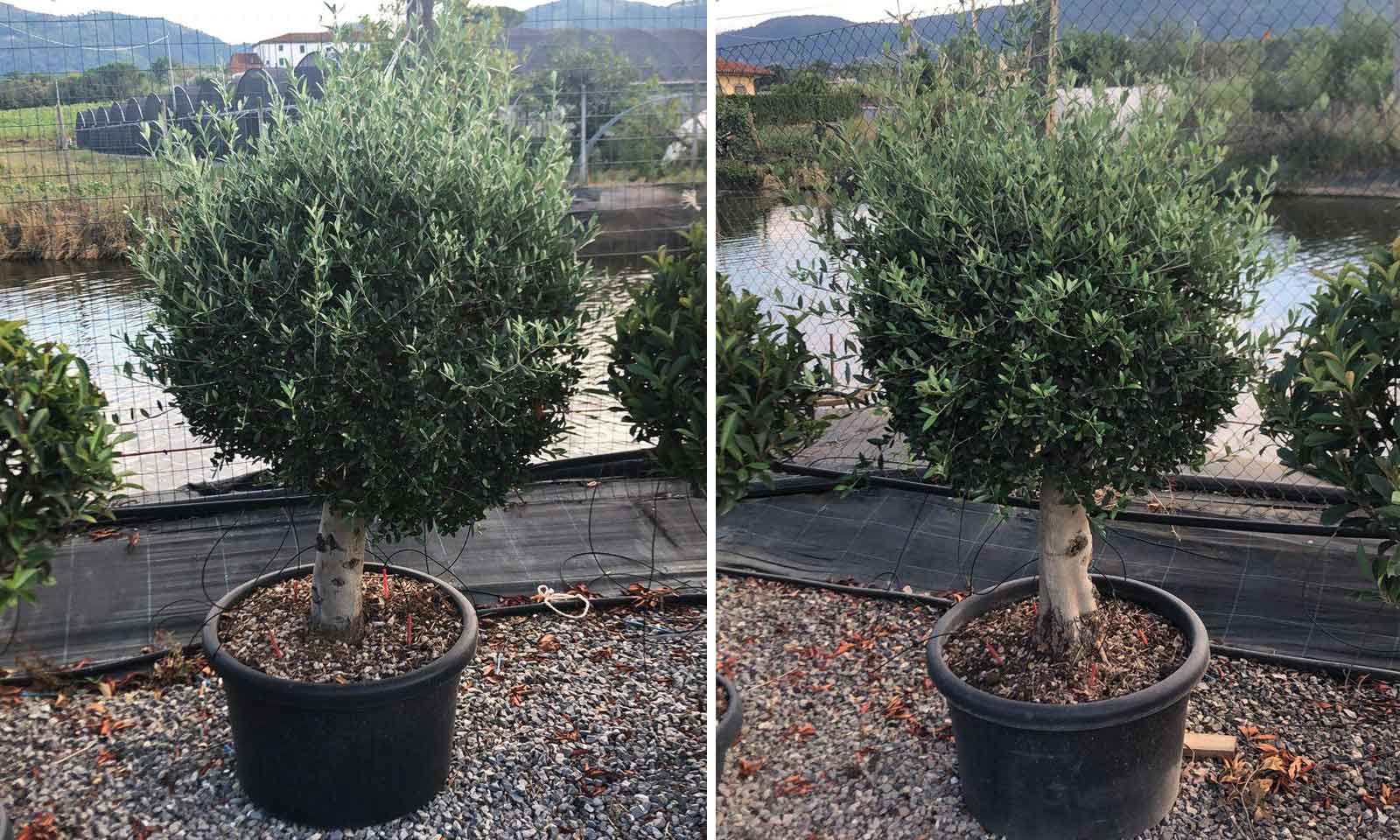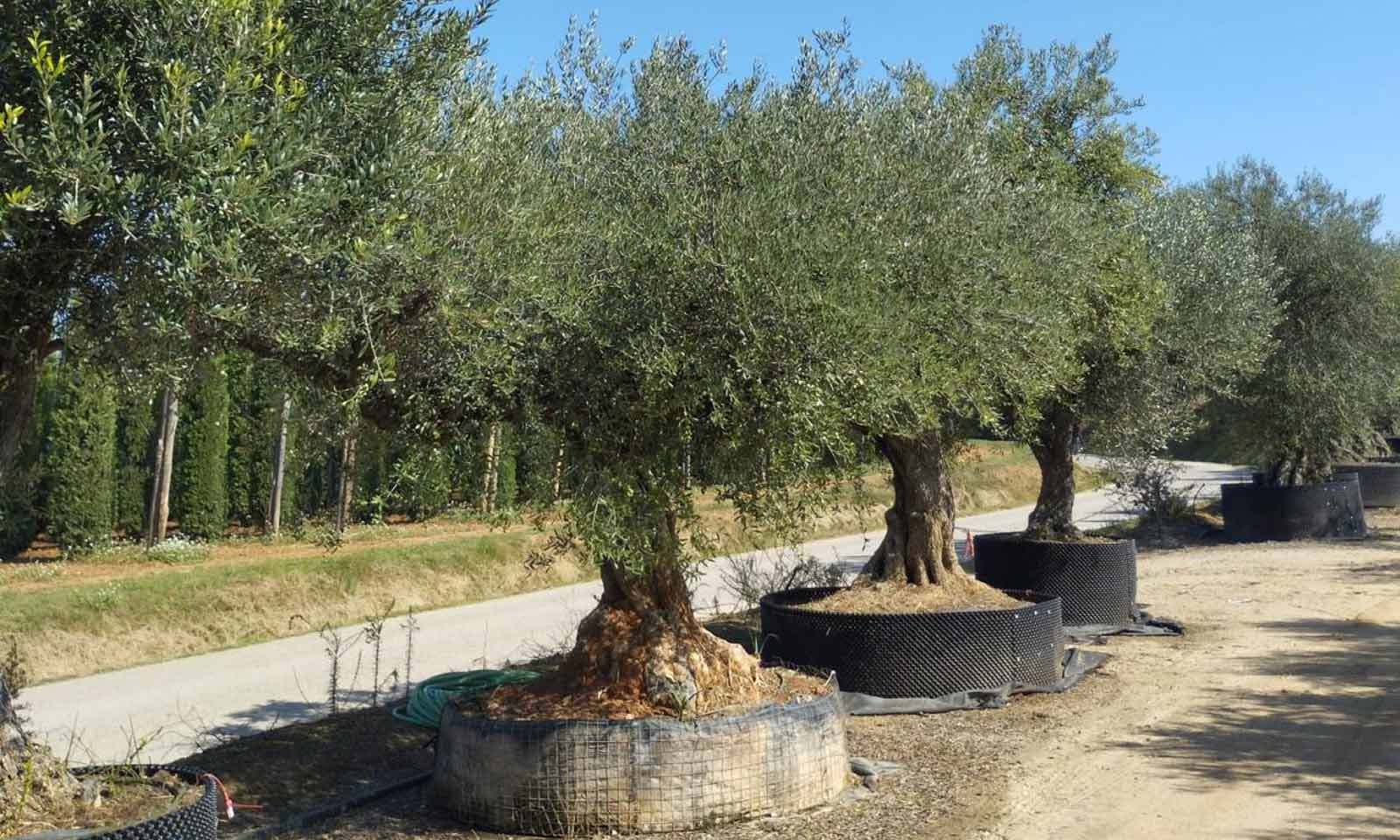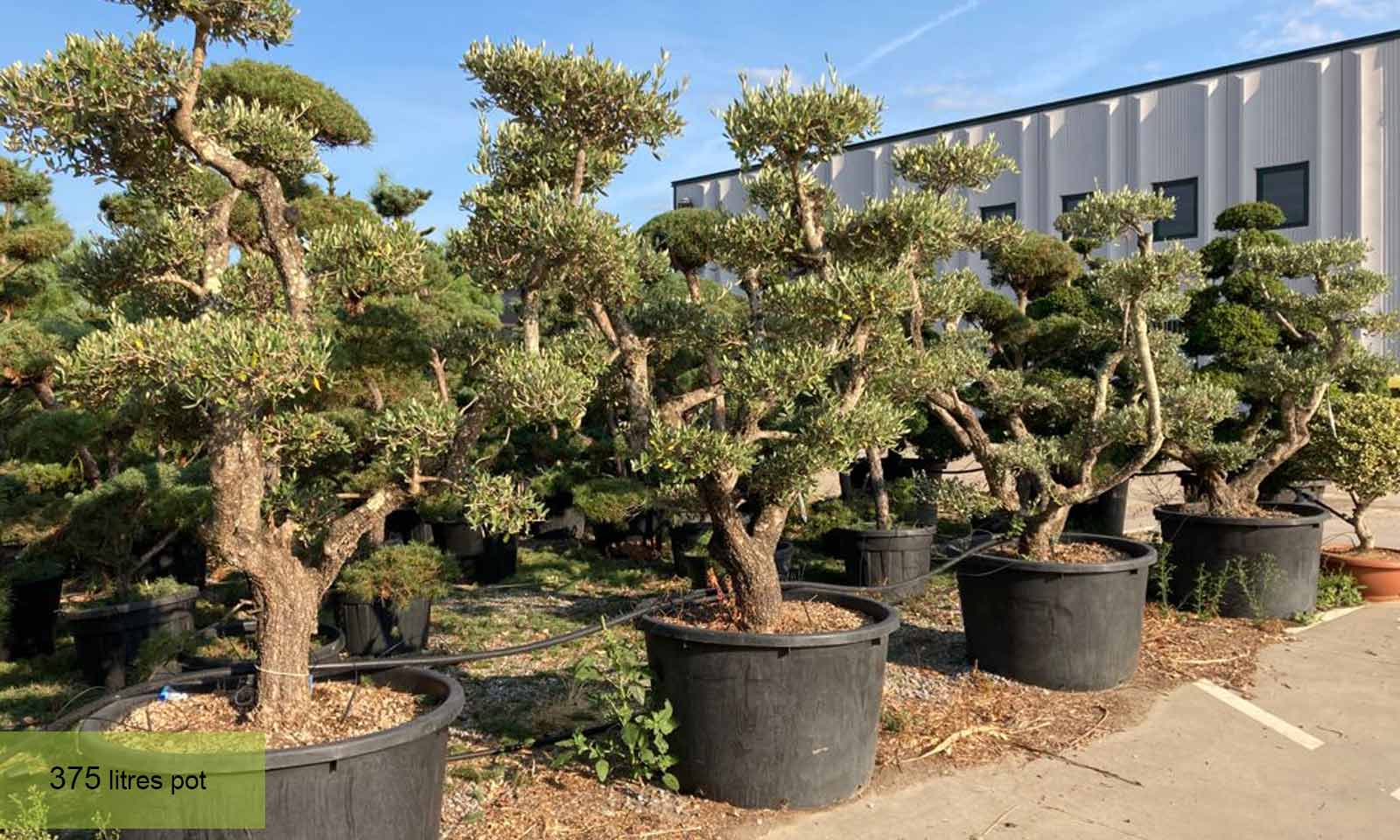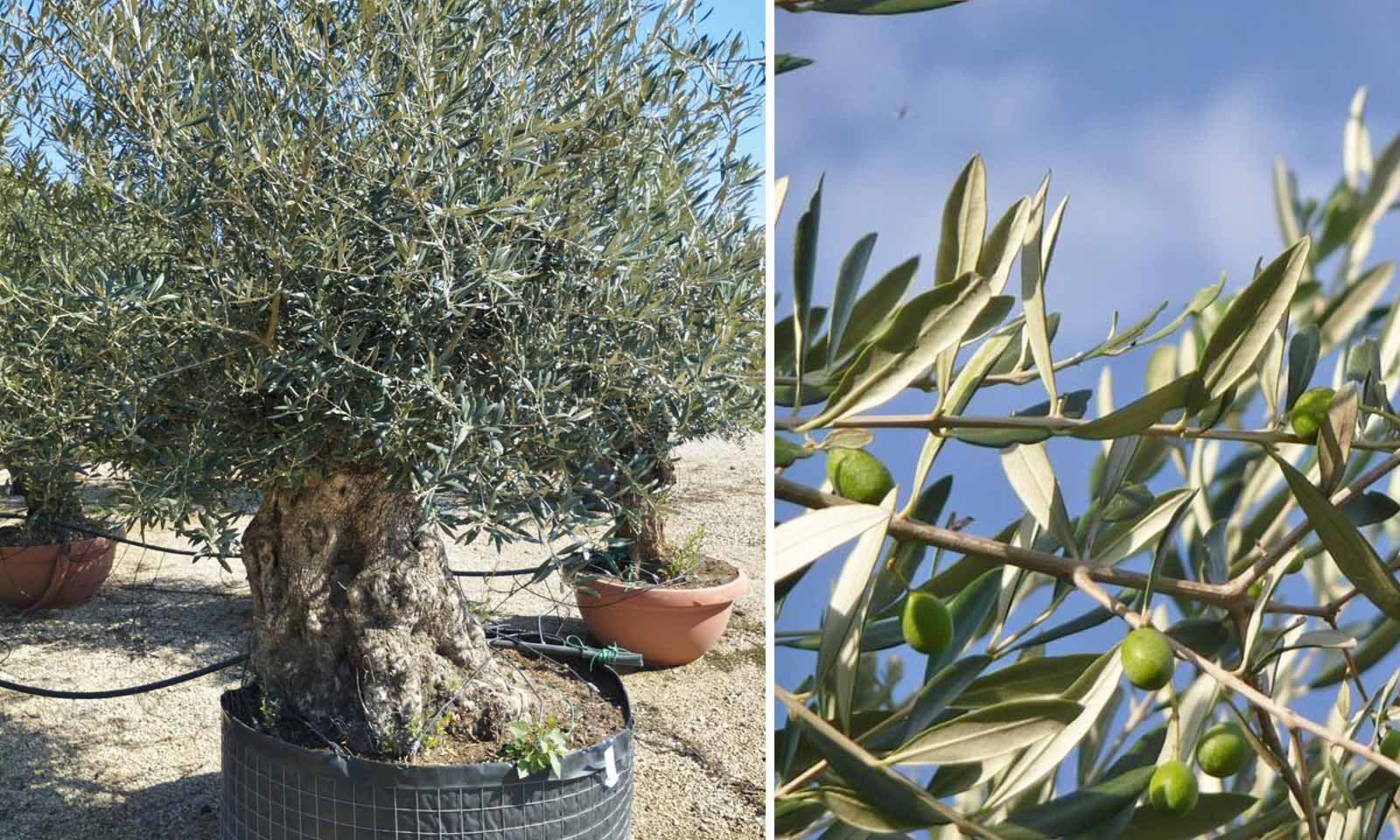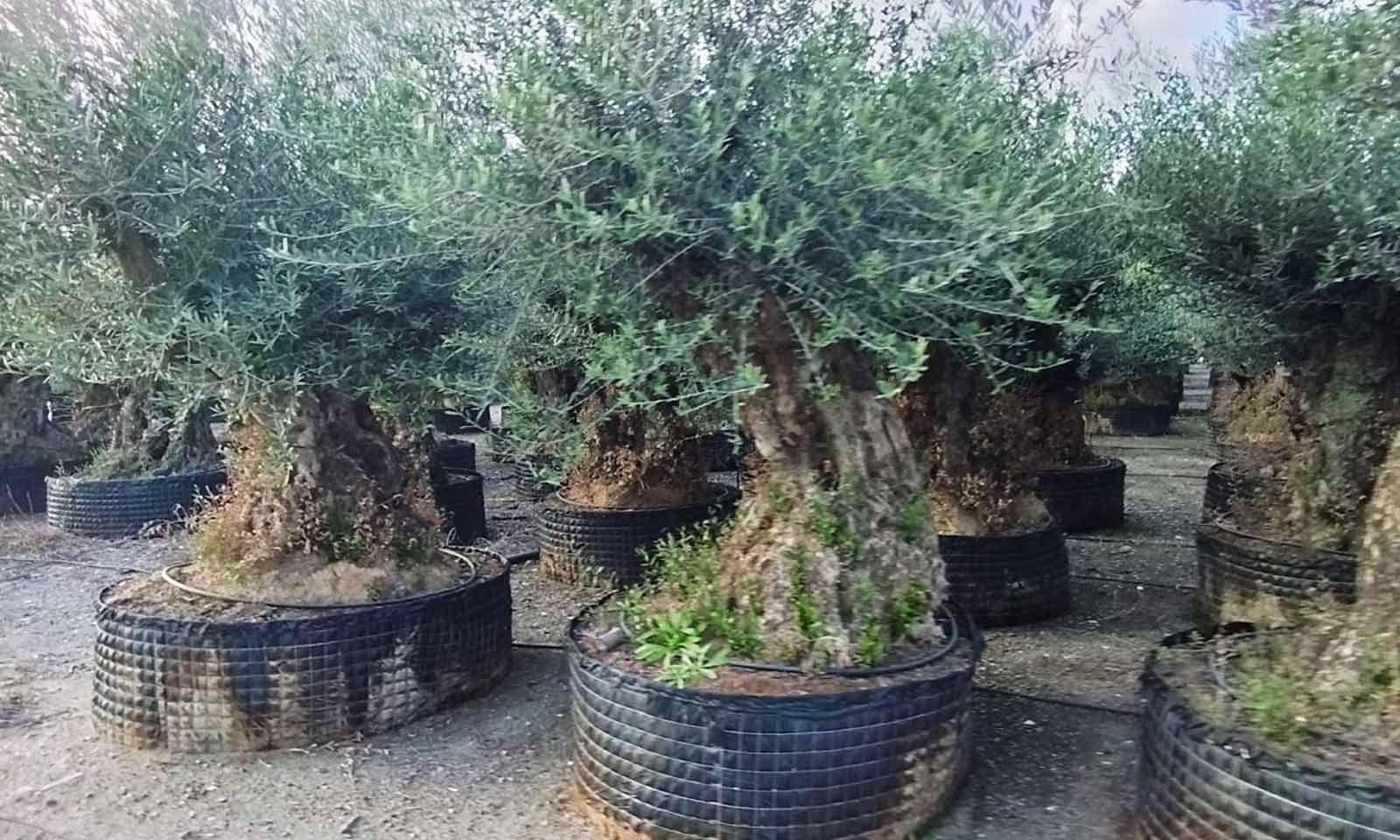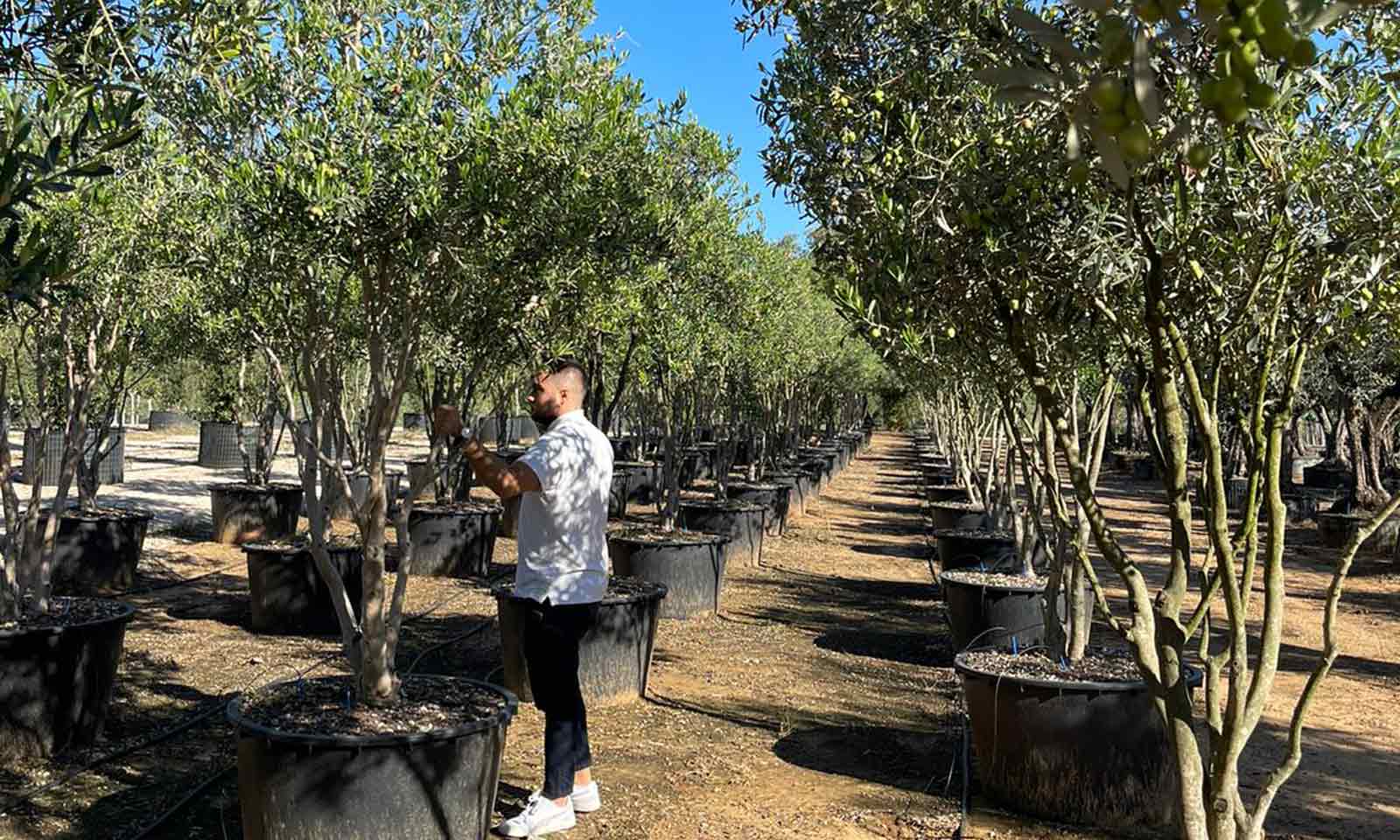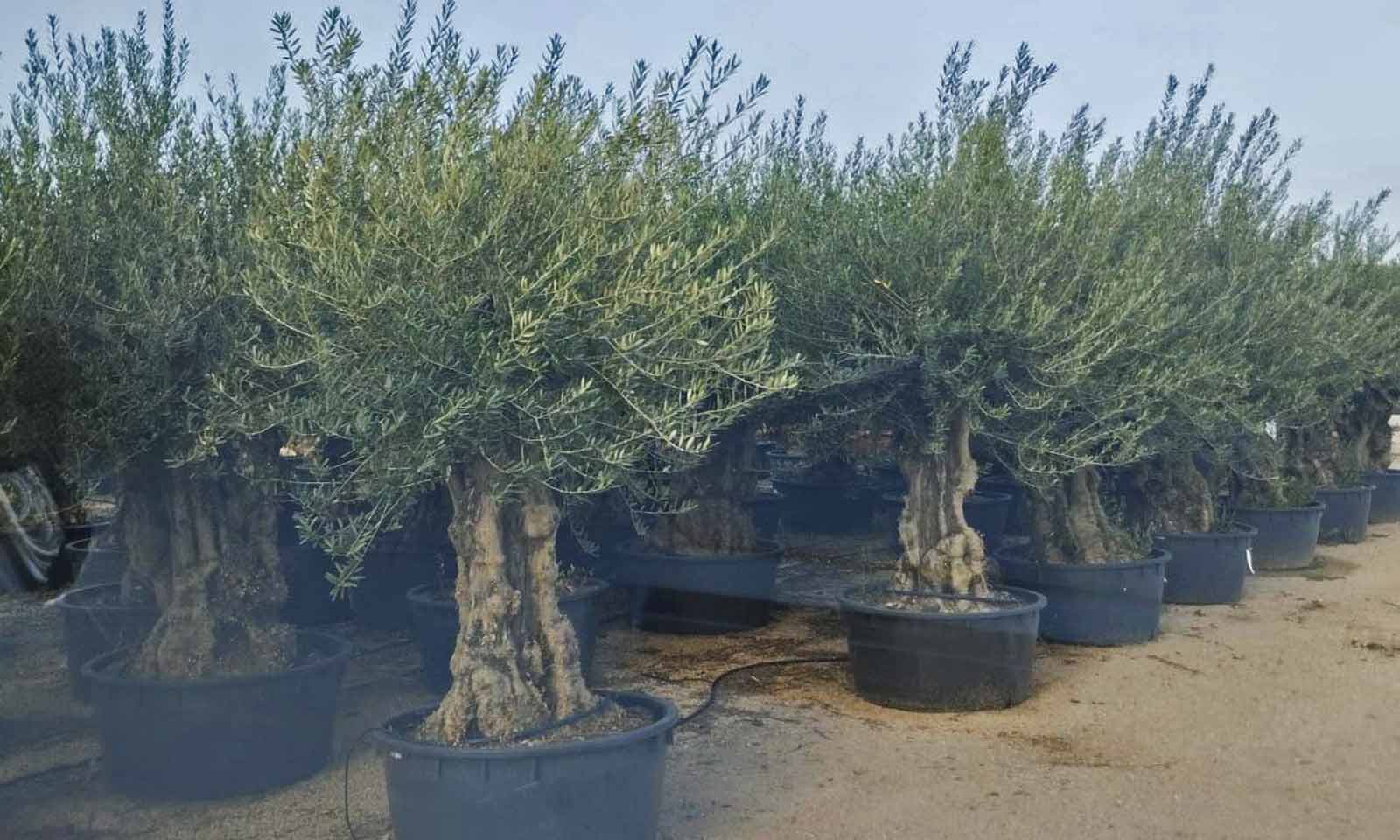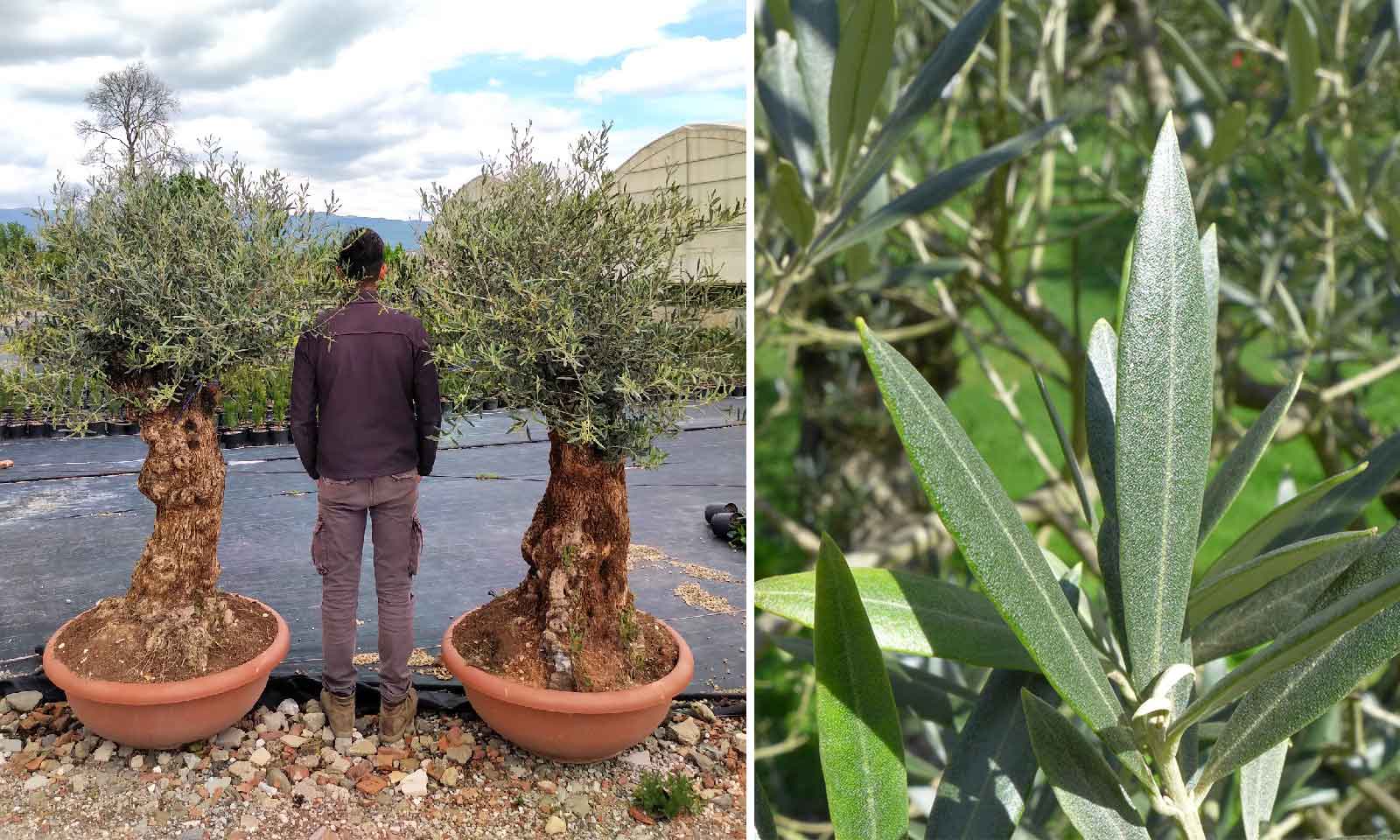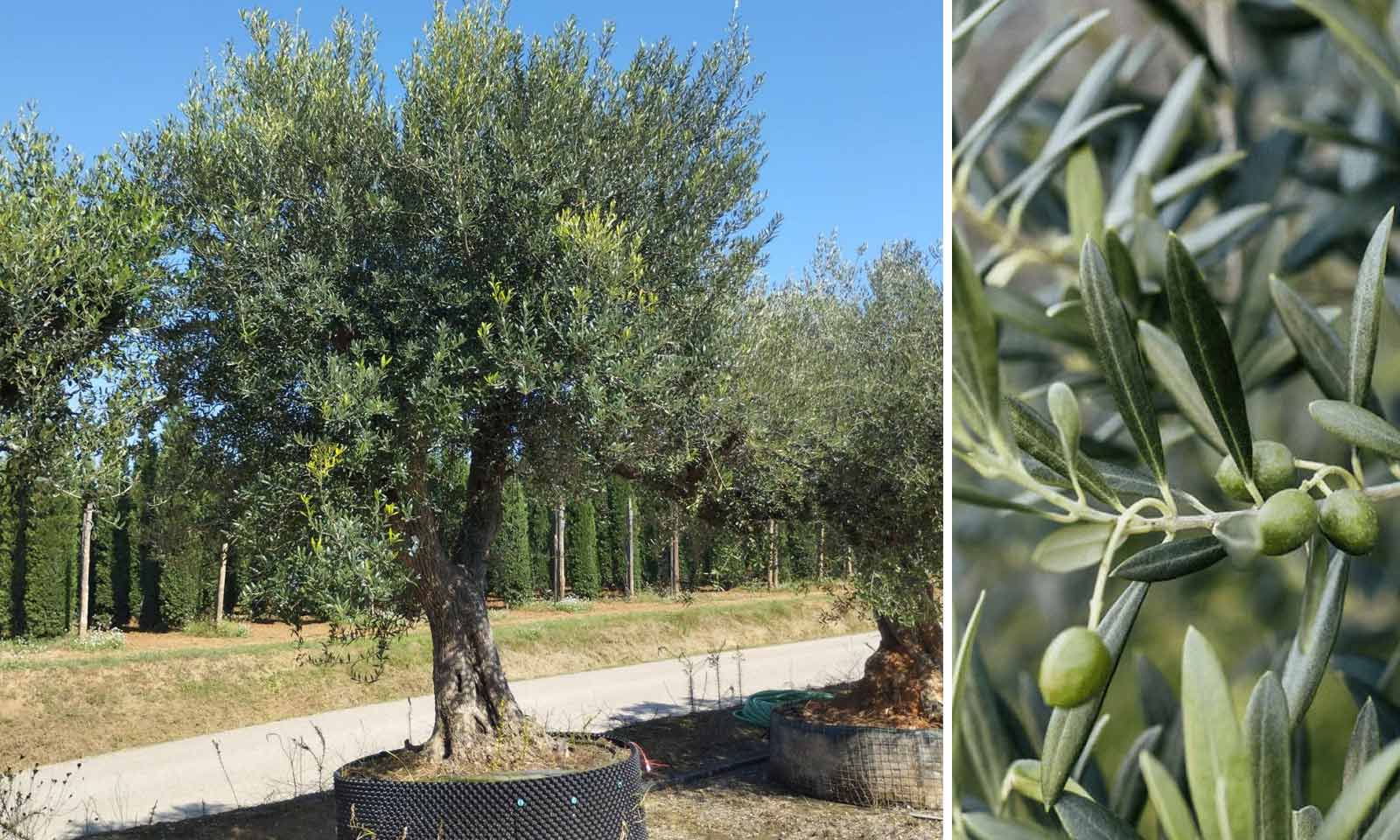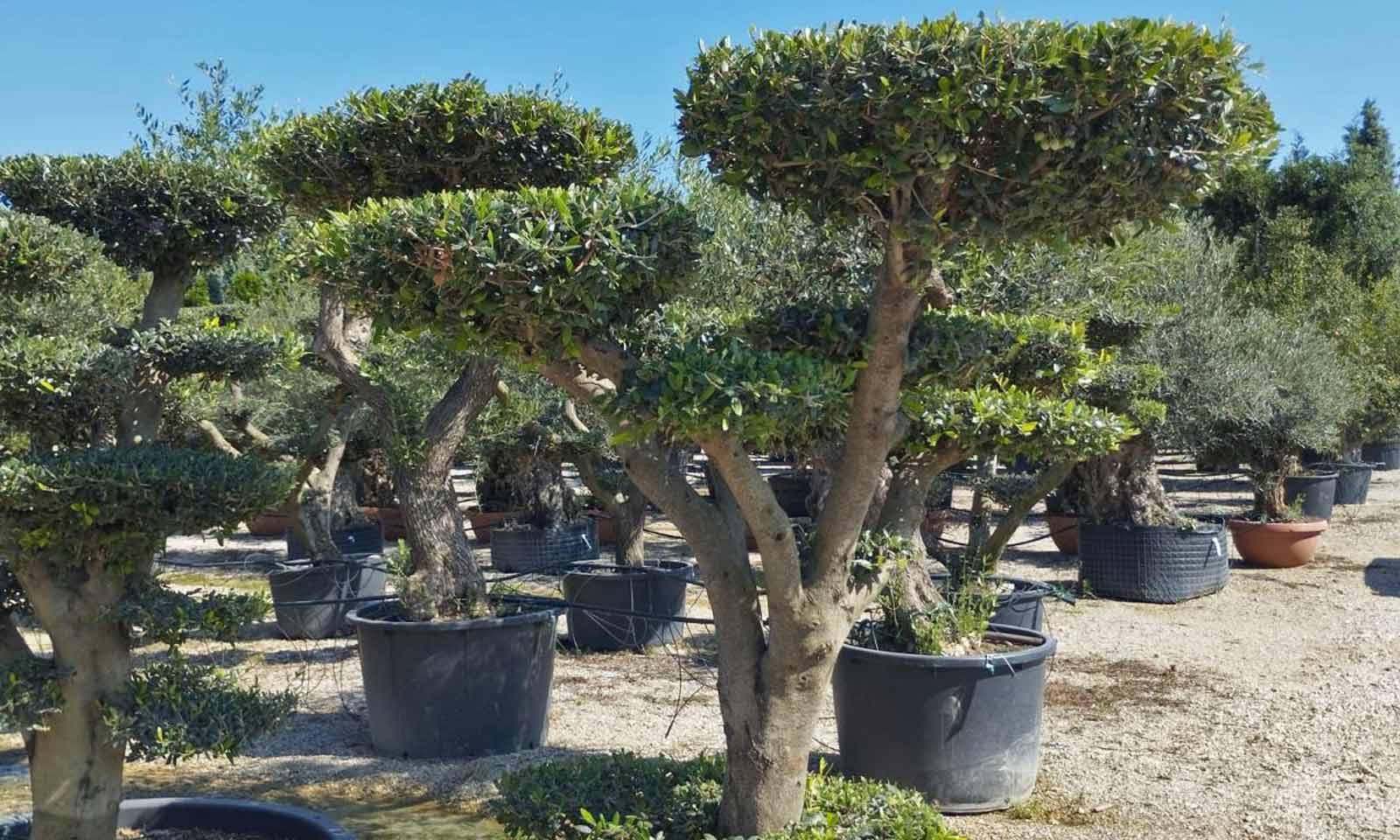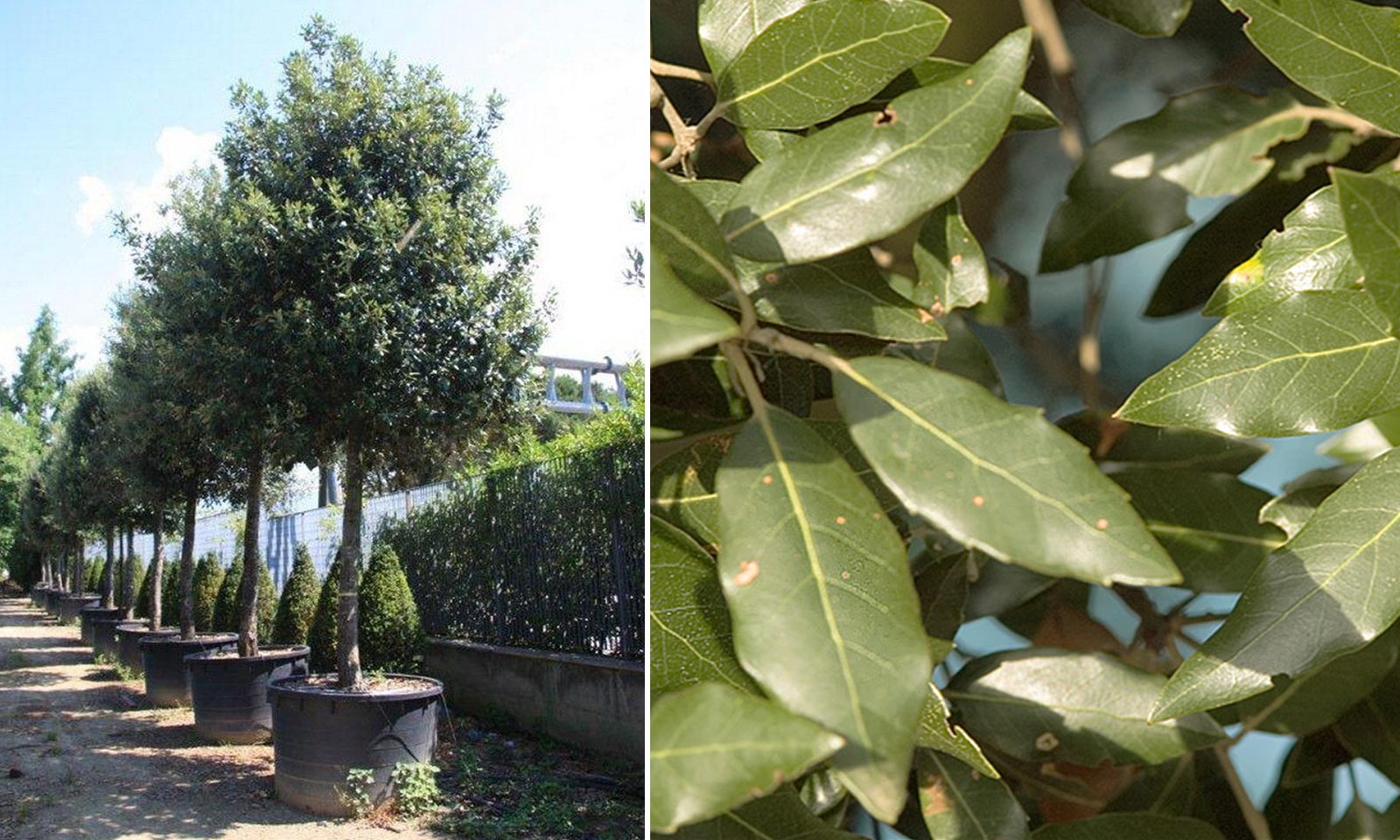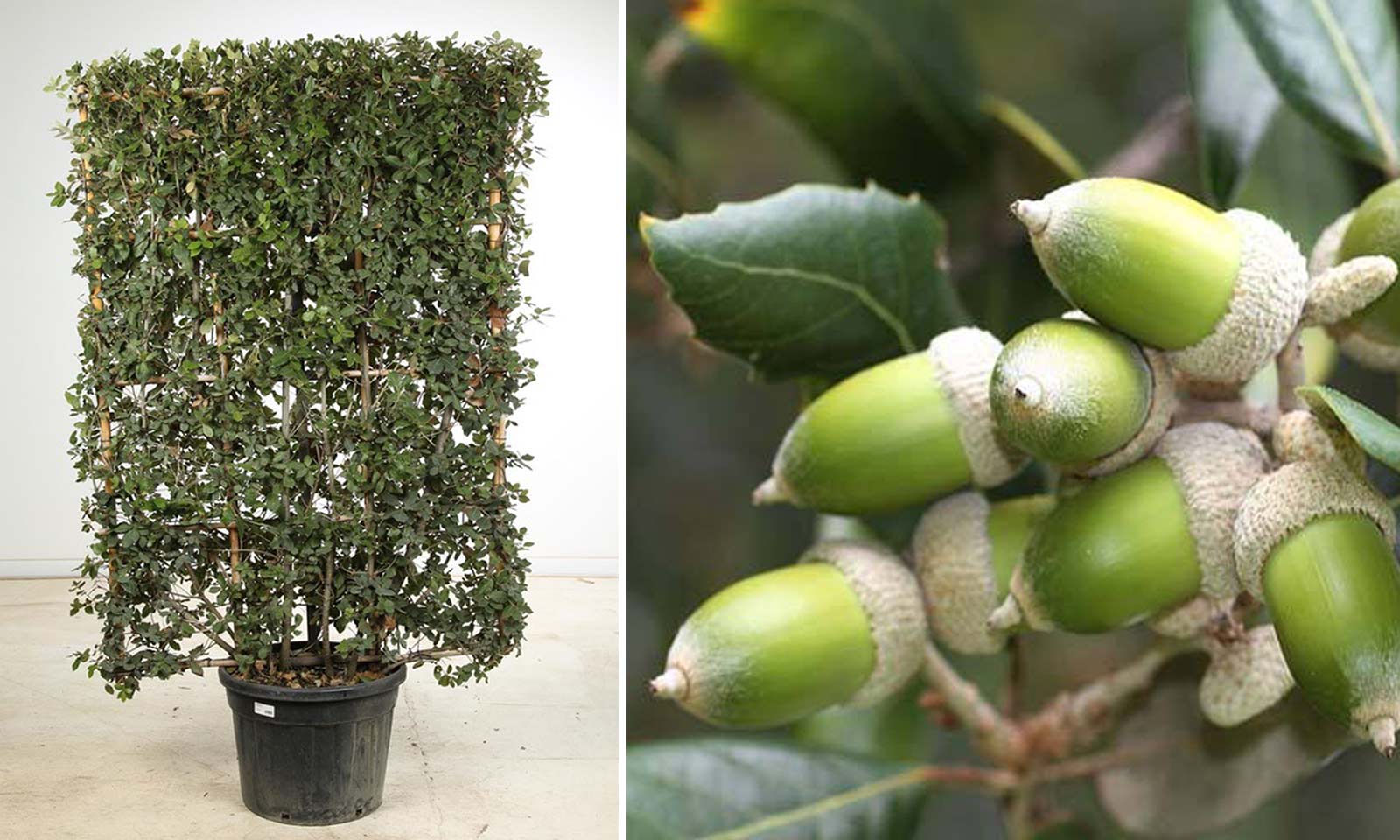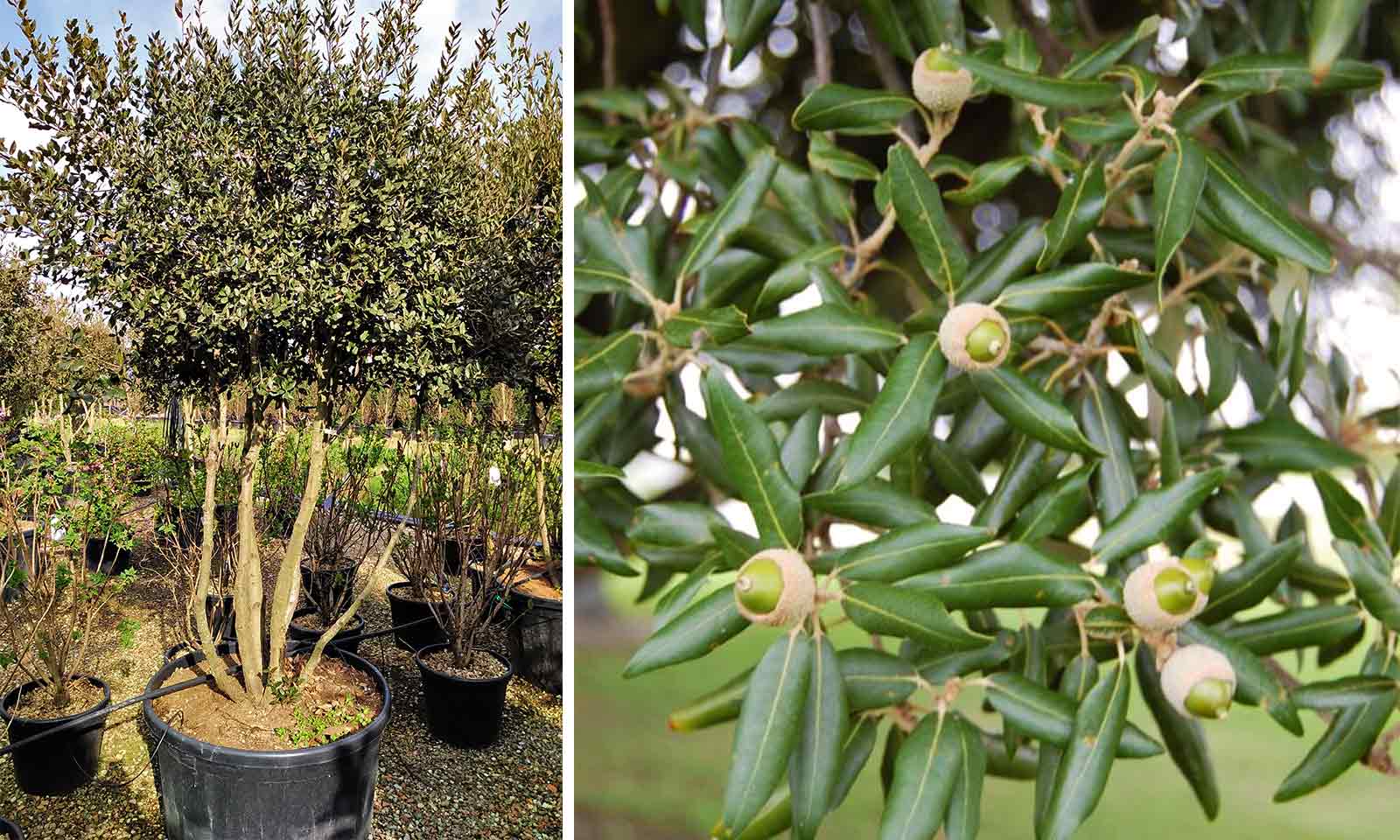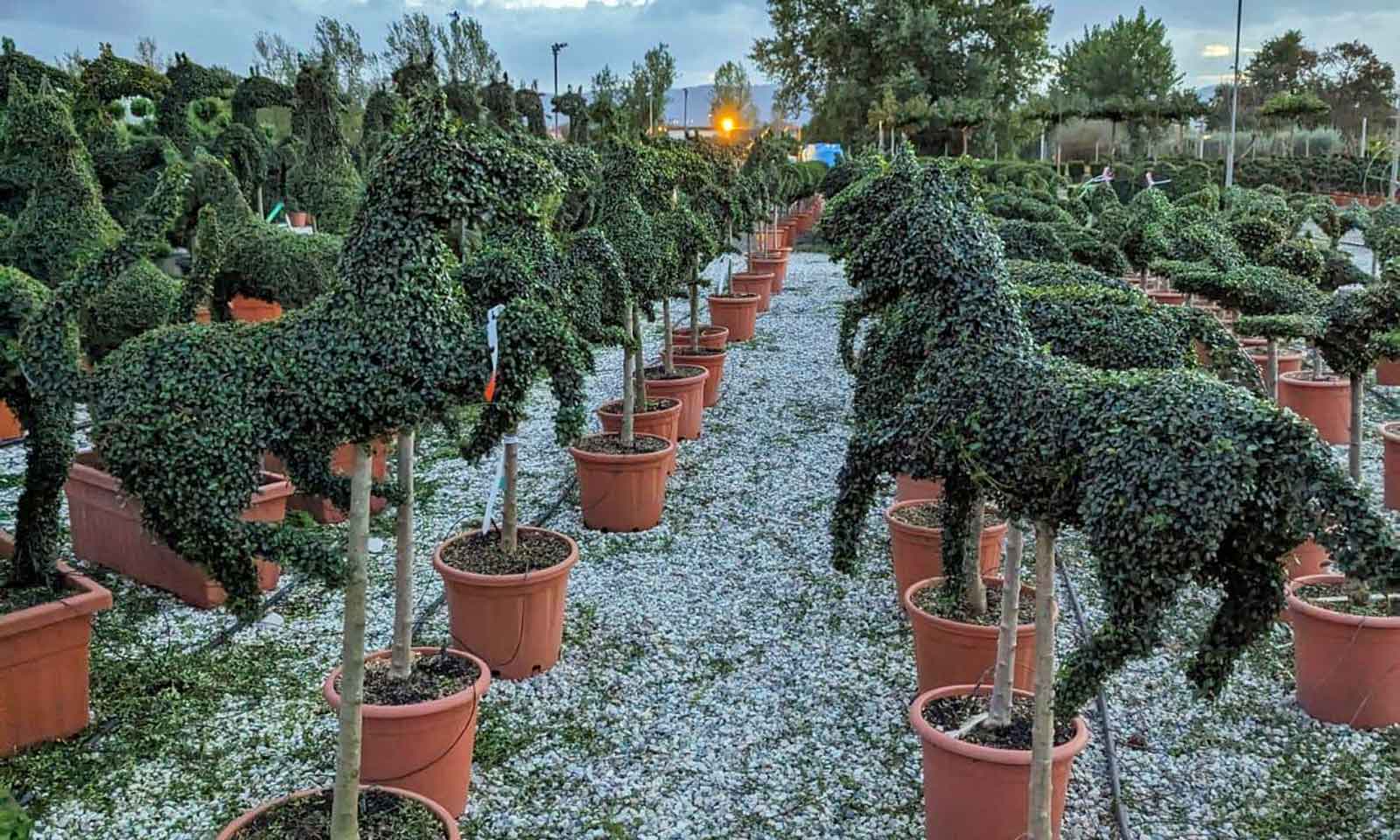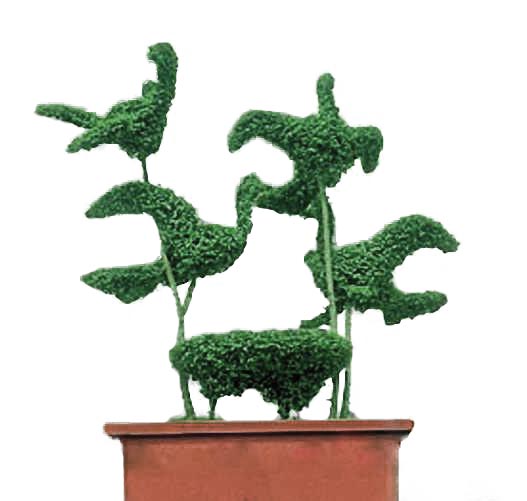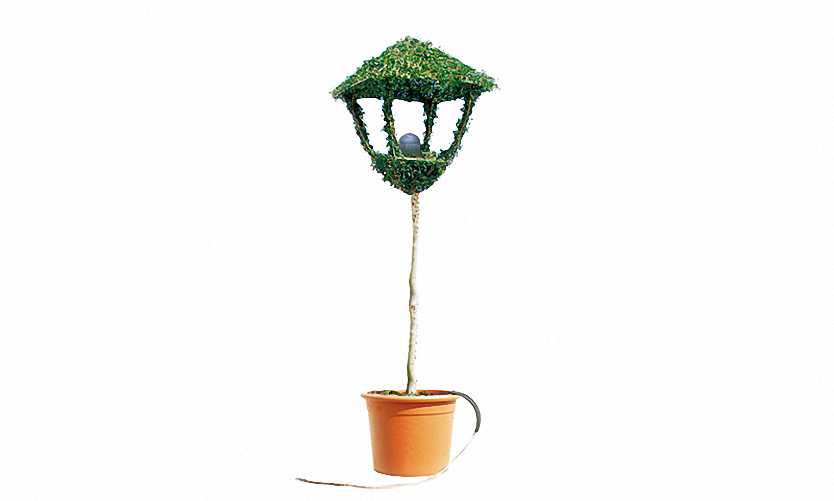Quercus Ilex (Holm Oak Tree / Holly Oak) - Standard Extra
Commonly called the Holly Oak tree, Quercus Ilex often live for more than a thousand years. They are large evergreens with very dense crowns of leaves. They have strong polymorphic leaf of 2 - 9cm long; the younger leaves are wider and have toothed, sharp margins. The colour and texture of the Quercus Ilex varies from hairy, tender and pale green when they first appear to a leathery, dark green, covered in soft white hairs on the underside, when adult. Both male and female flowers are borne on catkins and appear in June, the first ones being the most decorative as they are a soft yellow.
Grows in poor soil, but prefers calcareous, and does not like clay. Will withstand a lack of water in hot, dry summers and tolerates any kind of pruning. These are effective wind breaks, are suited to full sun or shade, good on their own or in groups and resists the salty winds of a sea climate very well, without damage to the beautiful foliage. It has a hardiness rating of H4 making it good for the British climate but better take measures to protect it during extreme cold snaps. It is prone to pests but is generally disease free.
Product Dimensions
Girth 25-30 cm: 285-450 litre pot, trunk – 1200 cm (6.6 ft), crown - 200-250 cm (6.6-8.2 ft);
Girth 30-35 cm: 450 litre pot, trunk – 200 cm (6.6 ft), crown - 250-300 cm (6.6-8.2 ft);
Latin Name: Quercus Ilex
English Name: Holm Oak Tree, Holly Oak
Species: Fagaceae
Genus: Quercus
Foliage Type: Evergreen.
Foliage: Green
Fragrance: Flower
Flower: Yellow
Flowering Period: From May to June
Suggested Location: Outdoor.
Suggested Soil Type: Moist but well-drained. Loam, Chalk, Sand
Suggested Exposure to Sunlight: Full Sunlight
Suggested Exposure to Weather: Sheltered or Exposed
Hardiness Rating: Medium (H4)
Lowest Temperature Tolerance: -15°C to -10 °C (5 °F to 23 °F)
Maintenance: Under glass prune to restrict size in spring
Growth Habit: Bushy
Cultivation: An easy to grow evergreen tree that responds well to formative pruning and clipping. Can be used as hedging in coastal areas and is suitable for most sites except the coldest inland areas. Leaf fall can occur in summer
Propagation: Propagate by seed sown in a coldframe or seedbed as soon as ripe or by grafting in mid-autumn or late winter
Suggested planting locations and garden types: Drought Resistant Hedging & Screens Mediterranean Climate Plants Coastal
Pests: Susceptible to aphids and leaf-mining moths
Diseases: Generally disease free
Final Height: Higher than 12 m (39.4 ft)
Final Spread: Wider than 8 m (26.2 ft)
Delivery Cost: This is calculated based on the total size, weight and quantity of your order, as well as the location of your delivery address. You will see the final price at the Online Checkout Page (before making payment) – our website will automatically calculate the lowest possible delivery price and apply discounts to orders of certain products – giving you the best value delivery every time!
Please note that high-volume orders will decrease your delivery costs significantly by spreading the price across multiple items. Visit our Delivery Policy page for more information.



